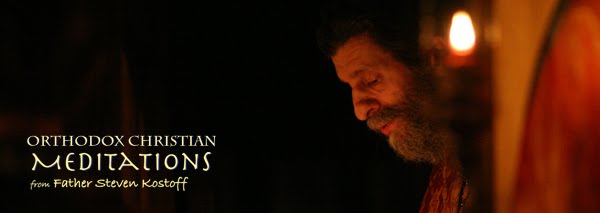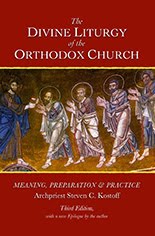Dear Parish Faithful,
 |
| Icon of St Mary of Egypt, with scenes from her Life. |
The Great Canon of St. Andrew of Crete is prescribed in its entirety (about 260 troparia!) to be chanted on the fifth Thursday of Great Lent. We were able to chant a part of the Canon yesterday evening. In his book Great Lent, Fr. Alexander Schmemann writes the following about the place of the Canon in our Lenten journey when we arrive to the fifth Thursday:
If at the beginning of Lent this Canon was like a door leading us into repentance, now at the end of Lent it sounds like a "summary" of repentance and its fulfillment. If at the beginning we merely listened to it, now hopefully its words have become our words, our lamentation, our hope and repentance, and also an evaluation of our Lenten effort: how much of all this has truly been ours? how far have we come along the path of this repentance?
For all that which concerns us is coming to its end. From now on we are following the disciples, "as they were on the road going up to Jerusalem, and Jesus was walking ahead of them". (Great Lent, p. 78)
And yesterday evening we also read the deeply moving and compunctionate Life of St. Mary of Egypt. This reading of the great saint's Life in the prayerful atmosphere of the darkened church adds a further dimension to the depths of our Lenten liturgical experience. In the words of Panayiotis Nellas, in his book Deification in Christ - The Nature of the Human Person:
Furthermore, St. Mary of Egypt is likewise present. The reading of her life does not have as its aim simply to move the faithful. It plays in the service an organic part which is at once deeper and more real.
The Orthodox faithful know very well that the feast day of a saint is not a simple honoring of a holy person or a recollection of his life for didactic reasons. Rather, it is a real participation in his life, his struggles, his victory and his glory. The reading of his life takes place in order to bring the saint amongst us in a true and real manner with his whole life and all his struggles...
The reading of the life of the saints is a liturgical act. It takes place within another form of time, liturgical time, and together with all the other ritual elements it creates another form of space, liturgical space...
Thus the liturgical reading of the life of St. Mary makes the saint present in the assembly of the faithful in a sacramental manner, so that she can accompany them and struggle with them in the contest of repentance and prayer.
It seems to me that we had the largest gathering of faithful for this service that at least I can recall. I hope something of what Fr. Alexander and Panayiotis Nellas wrote was experienced by all who were present.







